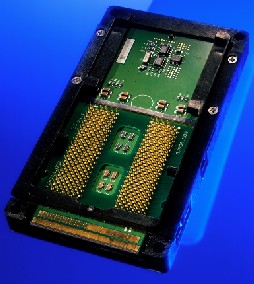AMD’s Voyage into the 64-bit Arena: x86-64 Revealed
by Anand Lal Shimpi on August 10, 2000 3:34 AM EST- Posted in
- CPUs
Ambition at its worst: x86-64 vs IA-64
AMD is at a very unique position now: they're not big enough to overshadow Intel but at the same time they're large and reputable enough to be able to offer their own input as to the direction the industry should be taking in the future. As you can probably guess, AMD's vision of getting from point A to point B (in this case, migration to 64-bit microprocessor architecture) is very different from the way Intel sees it happening. This is where having two very ambitious companies can create more than simple competition - we're getting into two completely different architectures.
Intel's approach to the 64-bit migration is simple. They will have their existing line of IA-32 processors, the Celeron, Pentium III and upcoming Pentium 4 for those that require the best performance under today's and tomorrow's 32-bit applications. Your average computer user and even your hardcore enthusiast is not going to need the benefits of a 64-bit processor architecture in the very near future; the eventual transition to 64-bit computing will occur across the board, but that won't be for at least a couple more years.
Then, to cover those that feel the need for a 64-bit platform, whether it is for greater computational power in handling 64-bit integers, etc… or for the increased amount of memory address space (the 4GB direct address limitation is beginning to present itself as a limitation for some very high end applications), Intel will offer their IA-64 solutions, starting with the Itanium.
The unfortunate downside to this solution is that if you or your company finds itself in a situation where you are still depending on quite a few 32-bit x86 applications that you need the best performance for, yet at the same time you want to make the move to 64-bit applications, a single Itanium or other IA-64 based processor isn't going to be the best solution. Ideally you'd need a Pentium 4 for your 32-bit applications and an Itanium to handle all 64-bit applications, since the Pentium 4 will most likely be better at running 32-bit apps than the Itanium.
AMD's approach is considerably different, since they aren't in a position to go down the IA-64 path and they can't really produce an IA-64 competitor this late in the game they had one of two options either, 1) stay out of the 64-bit arena completely and fall back to the position they were just a couple of years ago, following in Intel's footsteps, or 2) attempt to compete with IA-64 by producing their own 64-bit architecture.











1 Comments
View All Comments
Dr AB - Friday, May 8, 2020 - link
So that means indirectly, it was AMD's adoption decision/strategy that we see 32-bit only applications to this day. Hmm ... I wonder what if things had gone the other way.